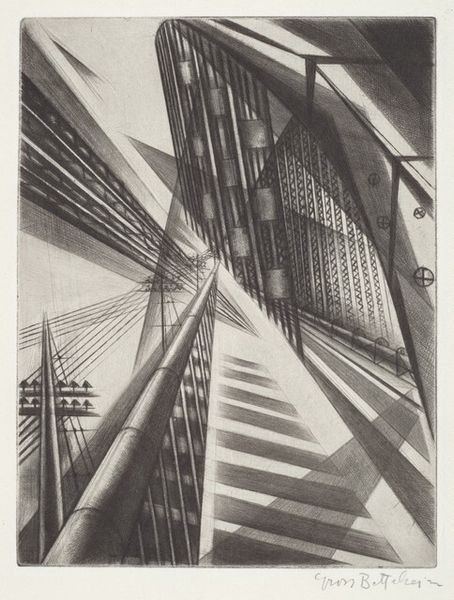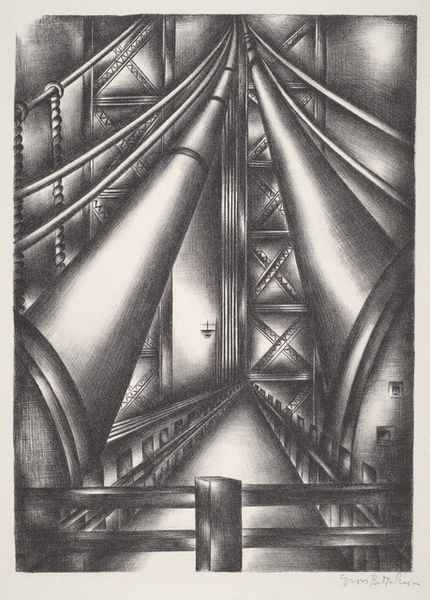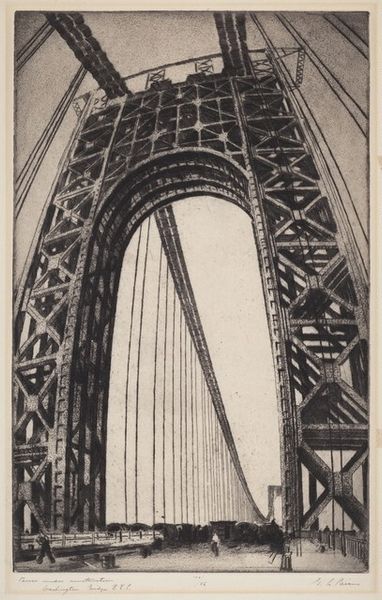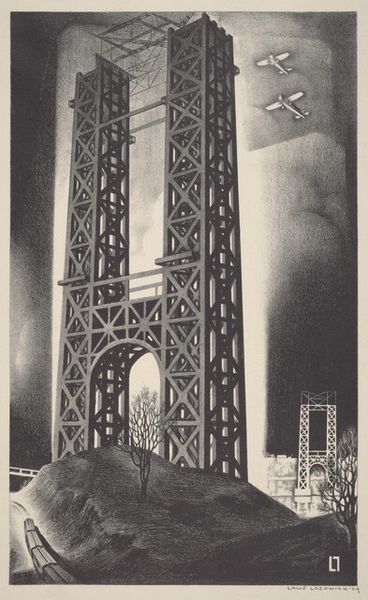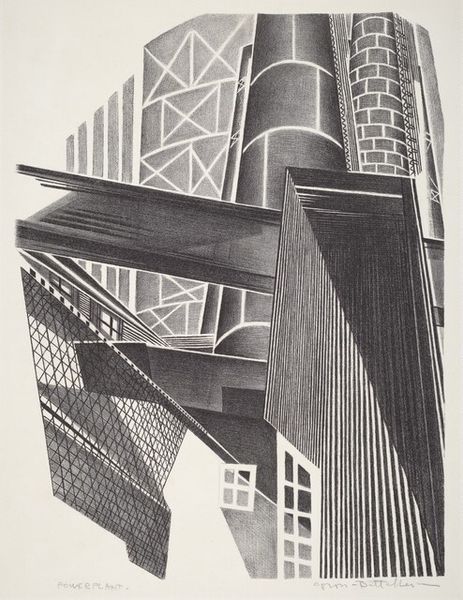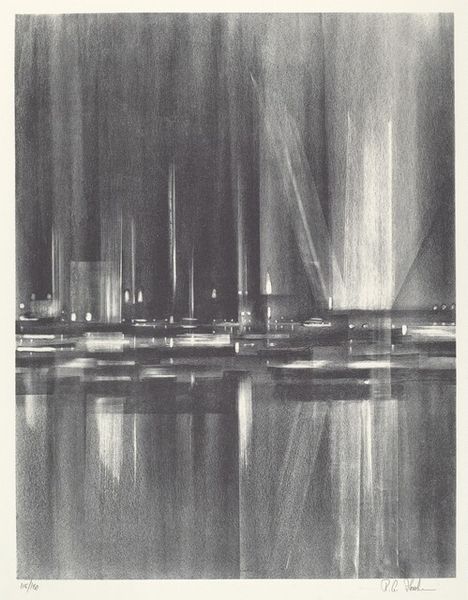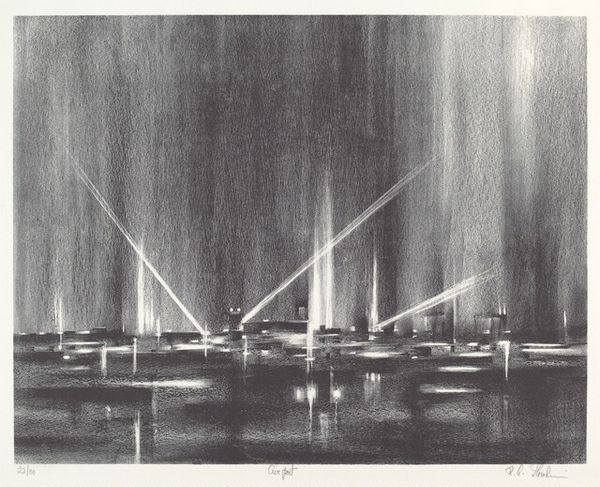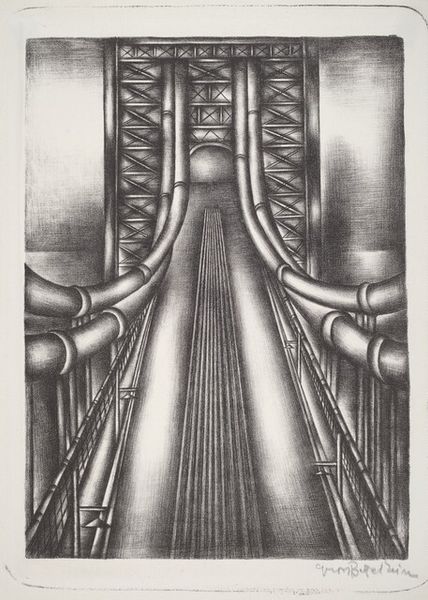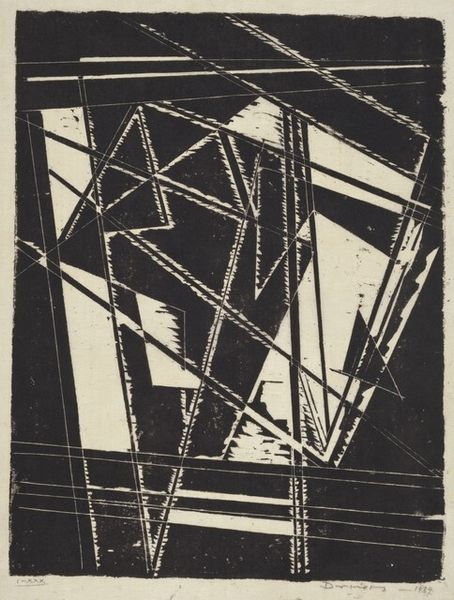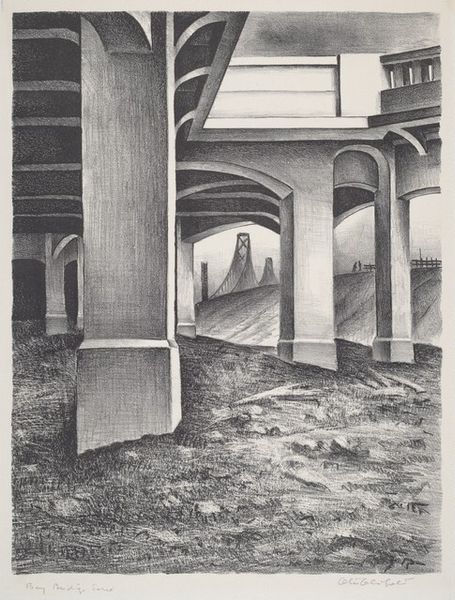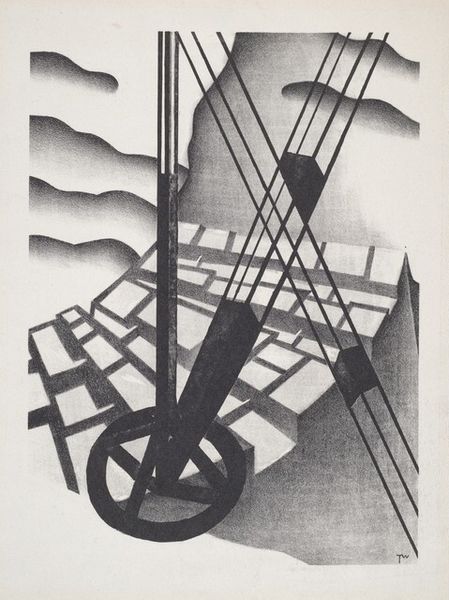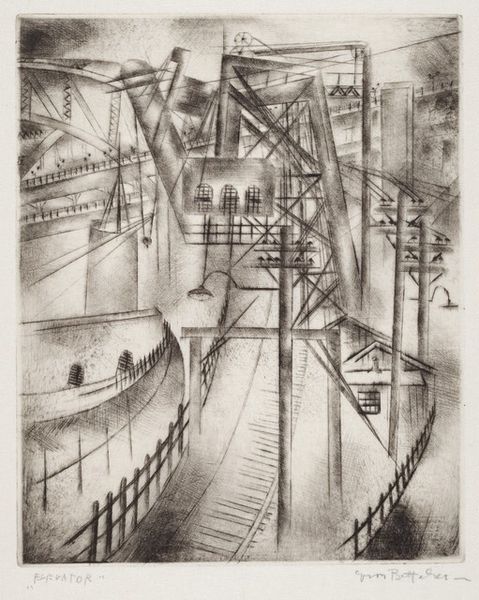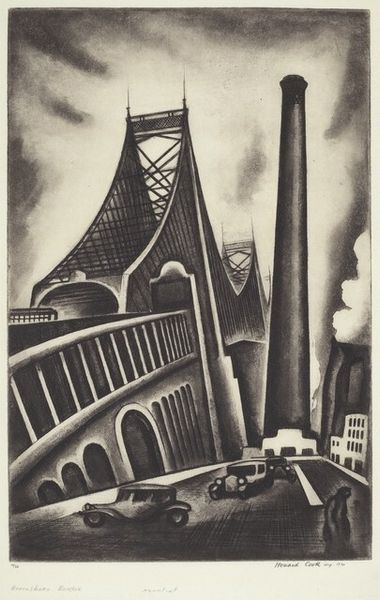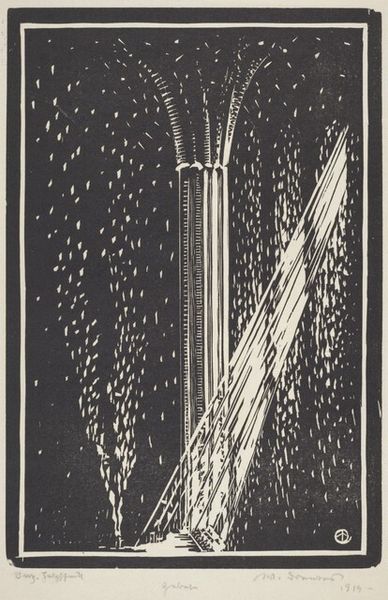
drawing, print, graphite
#
pencil drawn
#
drawing
# print
#
constructivism
#
geometric
#
line
#
graphite
#
cityscape
#
modernism
Dimensions: image: 28.5 × 23.5 cm (11 1/4 × 9 1/4 in.) sheet: 41.5 × 31 cm (16 5/16 × 12 3/16 in.)
Copyright: National Gallery of Art: CC0 1.0
Curator: Looking at "Transmission Line" by Jolán Gross-Bettelheim, dating from 1930, one is immediately struck by the composition’s angular precision. The print, rendered in graphite, meticulously captures the essence of industrial modernity. Editor: It does feel very clinical. The crisp lines and high contrast evoke a sense of awe but also distance, almost like peering into the future envisioned through the lens of early 20th-century technological optimism. It looks forbidding. Curator: I agree. This print underscores the transformative impact of industrialization on urban landscapes. Here the artist uses graphite with great skill, the controlled application bringing a photographic-like precision, a characteristic aesthetic choice embraced by many constructivist artists. The linear perspective emphasizes the transmission tower's imposing scale but also implies social and economic implications as well. Consider that the mass production and dissemination of this artwork—likely by offset lithography—aligns perfectly with its theme. Editor: Indeed, and consider the era. This piece appears to portray progress but its high modern style disguises an uneasy undercurrent, considering the political and social tensions brewing in Europe at the time. These stark geometries and severe forms served, to some extent, as powerful symbols of state authority and centralized power structures. I wonder how those living in this period felt about their place in the new, mechanical world order. Curator: It’s worth investigating the impact on art audiences of this period. Given that Gross-Bettelheim produced these types of modernist images, in her overall body of work, she appears to promote social progress, via constructivist-based artworks that promoted industry as key to collective progress. These pieces underscore the intersection of technology and visual culture. Editor: It’s important not to dismiss this print as mere futurist propaganda, though. Viewing the transmission tower itself, its formal starkness feels somehow timeless. In its angularity, I can see links to Art Deco trends popular in commercial designs, or Bauhaus applications in graphics, perhaps revealing a fascinating, fluid interplay between fine and applied arts, as Gross-Bettelheim created here a potent signifier of modernity through close attention to design principles and printing methods. Curator: You’ve expanded my thinking about her approach to process and form. Editor: Well, together we've unveiled more about Gross-Bettelheim’s vision. I leave with a fresh understanding of her dedication to social messaging.
Comments
No comments
Be the first to comment and join the conversation on the ultimate creative platform.
